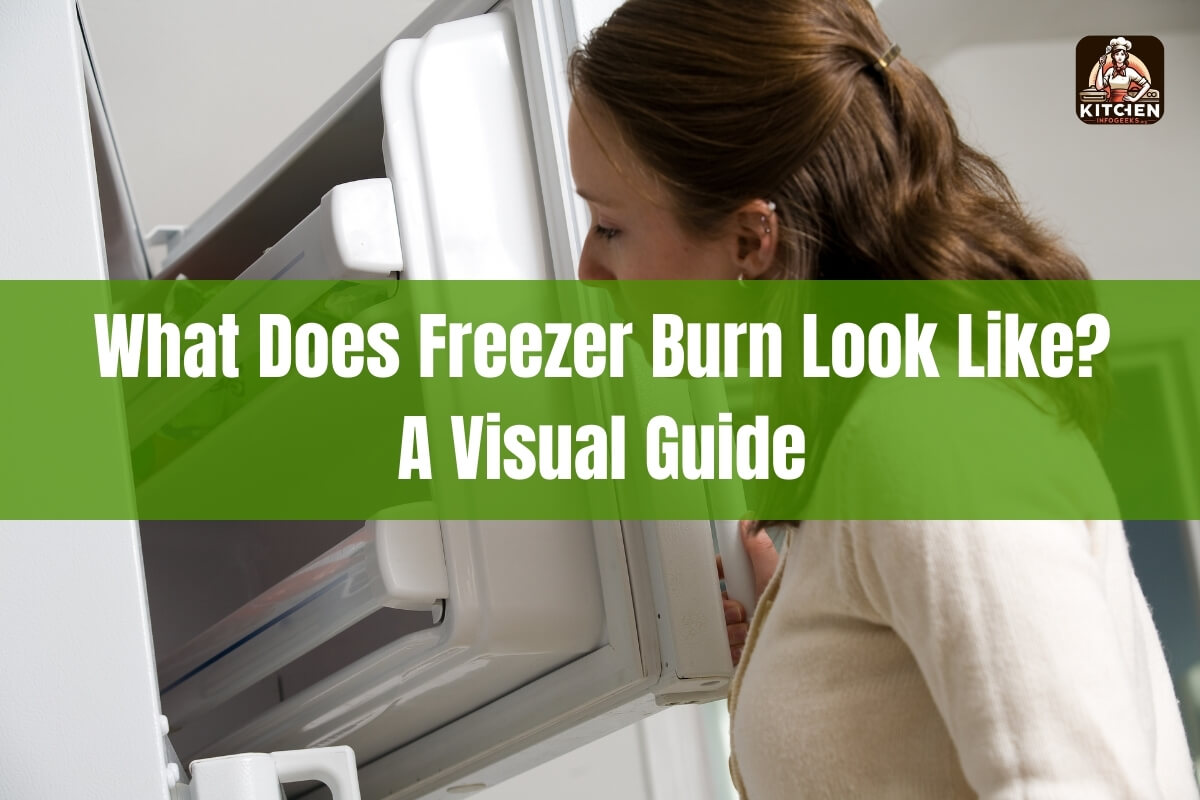
We’ve all experienced the disappointment of reaching for a frozen item only to find it covered in unsightly freezer burn. Freezer burn refers to the dry, discolored spots or patches that appear on frozen foods when they’ve been exposed to air. While still safe to eat, freezer-burned items often suffer from quality issues like toughness, dryness, and flavor changes.
In this guide, we’ll take an in-depth look at the telltale signs of freezer burn across different types of foods. We’ll also explore how to check for freezer burn, prevent it from occurring, and determine what to do with affected items. Let’s dive in!
What is Freezer Burn?
Before we get into the visual cues, it’s important to understand what freezer burn is and what causes it. Freezer burn happens when frozen foods lose moisture due to air exposure. This drying out process is known as sublimation, where water molecules transition from a solid to a gas without ever becoming a liquid.
The main culprits behind freezer burn are:
- Poor packaging or wrapping: Air can seep into foods that aren’t tightly sealed or have packaging tears.
- Lengthy storage times: The longer foods are frozen, the higher the risk of moisture loss.
- Temperature fluctuations: Frequent opening of the freezer or improper temperature settings accelerate sublimation.
While freezer-burned foods are still technically safe for consumption, they often experience significant quality degradation in terms of taste, aroma, and texture.
Visual Signs of Freezer Burn
Now that we know what freezer burn is, let’s examine what it actually looks like across various food groups. The specific signs can differ slightly depending on the type of item.
Appearance of Freezer Burned Meat
Meat is particularly susceptible to freezer burn due to its relatively high moisture and fat content. Here are some common visual indicators for different meat varieties:
- Beef: Grayish-brown or dull red-brown coloring instead of the bright, appetizing red. Patches may appear dry and leathery.
- Chicken and Turkey: Pale, grayish-beige discoloration. White blotches resembling fat may form along the edges.
- Fish and Seafood: Drying out and an opaque, white discoloration across the surface.
- Ground Meats: Brown or grayish hues with potential dry areas and a tough, rigid texture.
Freezer Burn on Fruits and Vegetables
Thanks to their high water content, fruits and veggies are prone to shriveling and discoloration when freezer-burned:
- Fruits: Shrunken or flattened appearance, often with white patches or areas.
- Vegetables: Dehydrated look with white, freezer-burned sections or spots.
In advanced stages, you may also notice ice crystals or a honeycomb-like structure forming across the surface.
Freezer Burned Ice Cream and Frozen Desserts
While discoloration isn’t usually an issue for ice cream, freezer burn still takes a toll on its creamy consistency:
- Icy, crunchy texture throughout from ice crystal formation
- Loss of rich, smooth mouthfeel
- Faded colors or swirls of flavor
Other Identifying Signs
Beyond the visible freezer burn signs, there are some other sensory cues to be aware of:
- Grainy or tough texture: Meat and other foods develop an unpleasantly rigid or gritty feel when thawed.
- Off-putting flavors or aromas: Oxidation can create weird, almost plastic-like tastes and smells.
- Ice crystals on the surface: Large, craggy ice crystal formations signal advanced freezer burn.
- Dry, shrunken patches: Dehydrated sections with a tough, leathery feel.
How to Check for Freezer Burn
Now that you’re familiar with the telltale signs, here’s how to properly inspect your frozen goods for freezer burn:
- Check the packaging: Look for any rips, holes, or openings that could have let air inside. Bloating or frost buildup on the exterior are also red flags.
- Do a smell test: An unpleasant, stale odor reminiscent of plastic is a sign of freezer burn and oxidation.
- Inspect the food itself: Remove the item from packaging to thoroughly check for any of the visual indicators outlined above.
- Consider storage duration: Items that have been frozen for longer than their recommended storage time are at higher risk. Check labeled dates.
If you discover freezer burn, you have a few options. For minor cases, you can try trimming off the affected areas before cooking or eating the unburned portions. But if a large area is impacted or the entire item seems ruined, discarding may be best to avoid nasty flavors and textures.
Preventing Freezer Burn – Top Tips
Of course, it’s always better to prevent freezer burn in the first place rather than dealing with it after the fact. Follow these simple storage guidelines:
- Use proper packaging: Opt for thick freezer bags, airtight containers, or vacuum sealers to lock out air exposure.
- Wrap items tightly: Remove as much air as possible before sealing and consider double-wrapping for maximum protection.
- Maintain recommended freezer temps: Keep your freezer between 0°F and -10°F to minimize sublimation.
- Freeze foods quickly: Faster freezing=smaller ice crystals that are less damaging.
- Rotate frozen stock regularly: Don’t let items linger too long past their recommended freezer life.
- Label everything: Clearly mark packages with the contents and date frozen to keep track.
Following these simple precautions can go a long way in preserving the quality and freshness of your frozen favorites.
The Bottom Line on Freezer Burn
In summary, freezer burn shows up in various unsightly ways like discoloration, dryness, toughness, and weird flavors. But as long as it’s not too severe, you can often salvage freezer-burned items by trimming off affected areas.
The key is to learn how to identify those telltale visual cues and storage mistakes that enable freezer burn. With proper packaging, temperature control, and rotating your frozen stock, you can keep this pesky problem at bay. Enjoy your frozen foods at their tastiest!






